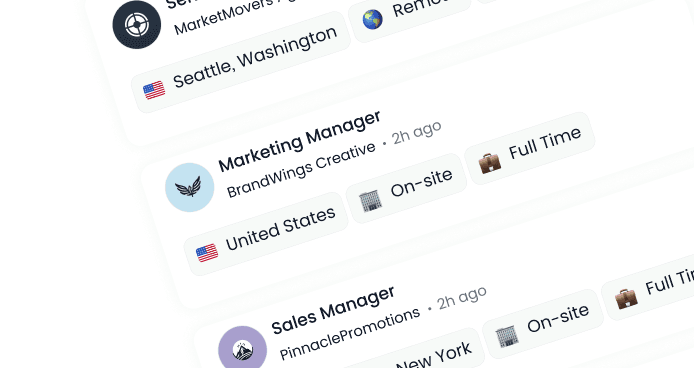Shortlist Faster Without Losing Quality Through Automation in Candidate Screening
Published:
October 17, 2025
All
AI Recruitment
Recruiting Tips
Employer Branding
Candidate Experience
Workforce Planning
Speed and quality can finally coexist. Discover how AI-driven automation helps recruiters shortlist top candidates faster — without sacrificing precision or fairness.
Let’s face it — in today’s competitive job market, posting a single job ad can bring in hundreds of applications. The challenge arises when recruiters must manually screen every one of them — creating stress, inefficiency, and risking the overall quality of hires.
However, that shouldn’t be the case, especially since AI can address this problem quite easily. To explain further, a recent LinkedIn report found that hiring teams using AI-powered automation in candidate screening are 9% more likely to make a quality hire than those who don’t.
Interested in what automation in candidate screening is and how it can optimize your recruitment processes? Not to mention the numerous ways it can help achieve your hiring quality goals with greater efficiency. Then we suggest you read this blog post till the end. So, without further ado, let’s begin.
So, What is Automation in Candidate Screening?
When we talk about automation in candidate screening with respect to the current technology, it is the implementation of artificial intelligence to assist with the repetitive and laborious task of initial resume screening and parsing. Unlike older tools that relied solely on keyword matching, today’s AI systems analyze multiple layers of candidate data — from experience and certifications to context and tenure — to create a more accurate match, the smart systems of today can do a whole lot more and all with accuracy to the point it can shortlist and look at screen based on various data, not just a specific set of keywords.
The above solution helps free up recruiters from doing mundane clerical tasks to focusing on their core objective of interviews and decision making. Let’s take a closer look at why this matters now more than ever.
Why Recruitment Automation Matters Right Now…
Well, we did mention that large number of applications can overwhelm hiring teams. Still, you might wonder — why does this matter so much? Sure, you could argue that manual screening only takes more time — but is that time worth the loss in productivity and potential candidates? Not to mention the cost.
The core function of a hiring manager is to create rapport, build relationships, get to know a person. If they are spending most of their time in scheduling, rescheduling, and basic admin tasks they are spending less time on what truly matters making the right call when they find the best person for the job.
The problems arise if the process above takes too long, then another company which is utilizing modern tech will take your prized candidate away from you. Also, the longer the process takes, the more chances of candidates dropping off increase.
Let’s not forget — every open role carries an operational cost. When a position remains unfilled, existing employees work twice as hard to cover the gap, affecting morale and productivity. That can increase frustration and decrease morale and productivity. Do you really want to risk it?
Core Building Blocks of a Streamlined Hiring Process
If you have come this far, that means you realize the importance of having automation in the hiring process. However, let us look at what are the basics of a streamlined recruitment process:
Scanning and Screening Resume
Modern AI-based automation systems can do much more than the old keyword-centric tech. Once trained and instructed it can take into consideration multiple aspects of an applicant. Such as certifications, expertise and skills, titles, tenure to create a candidate profile. This parsing of data ensures things are streamlined from apples to apples and oranges to oranges.
Pre-Screening Automation (Knockouts & Scored Questions)
With the ability to configure questions such as expertise and skills requirements, to those about shift availability, location and salary can help easily highlight strong contenders. Utilizing the ability for AI to intelligently differentiate between a must-have requirement and nice-to-have is also a very powerful tool.
Automatic Ranking for Candidate Shortlisting
A ranking model sorts applicants by how closely they match your criteria. Keep it transparent: surface why someone ranked high (e.g., "5 years in SOC2 environment + AWS cert + weekend availability"). That explainability helps hiring managers trust the shortlist.
Conversational Screening (Chat/Text) & Async Video
Mobile-friendly chats collect structured answers; one-way video captures communication signals at scale without scheduling friction. Used well, these tools reduce back-and-forth and bring soft-skills context into the shortlisting stage — before the live interview.
ATS Integrations for a Single Source of Truth
Automation sticks when it's native to your ATS: status changes trigger emails, interview links, and tasks; scores move with the candidate record; compliance logs are central. Integration keeps your streamlined hiring process from fragmenting across tools.

A Practical Rollout Plan (That Teams Actually Adopt)
Now that you know what a streamlined process looks like, the next question is — how do you implement it? Well we have listed example steps below:
Audit your funnel: Identify the slowest, most manual steps (resume triage, first-round scheduling, basic eligibility).
Prioritize high-impact automations: Start with pre-screening automation and automatic ranking; add conversational apply or async video once the basics work.
Integrate with your ATS: Map statuses, fields, user permissions, and alerts so automations are visible and trustworthy.
Pilot on one or two roles: Compare against a control group; track recruiter time saved, pass-through rates, and quality-of-slate metrics.
Train hiring managers: Explain scoring, show examples, and agree on when to override the model.
Review fairness & accuracy monthly: Tune weights, questions, and knockout rules; save before/after dashboards.
Scale and standardize: Template your best flows for repeat roles; build playbooks that new recruiters can run on day one.
What Results Should You Expect?
Keep your claims realistic and measurable. For a macro view, SHRM's 2025 research notes 36% of HR teams using AI report reduced recruiting/interviewing/hiring costs, and 24% say AI improved their ability to identify top candidates. Use this as a baseline to shape internal KPIs: time-to-screen, time-to-hire reduction, cost-per-hire, recruiter hours saved, and pass-through rate to hiring manager review.
In Conclusion
Automation in Candidate Screening helps you cut manual triage, focus on top candidates, and streamline hiring — while keeping fairness front and center.
If you're exploring a modern stack, DigitalHire offers an AI-powered video job board (useful for discovery and top-of-funnel matching) and pre-recorded video interviews (useful for asynchronous screening at scale). Explore: DigitalHire's AI Job Board.
Let the tech do the heavy lifting: Stop wasting hours sorting resumes. Let AI handle the screening, so you can focus on meeting the best people. Try DigitalHire today.
FREE JOB POST
Looking to fill a position quickly? Post your job for free and reach top talent today!




